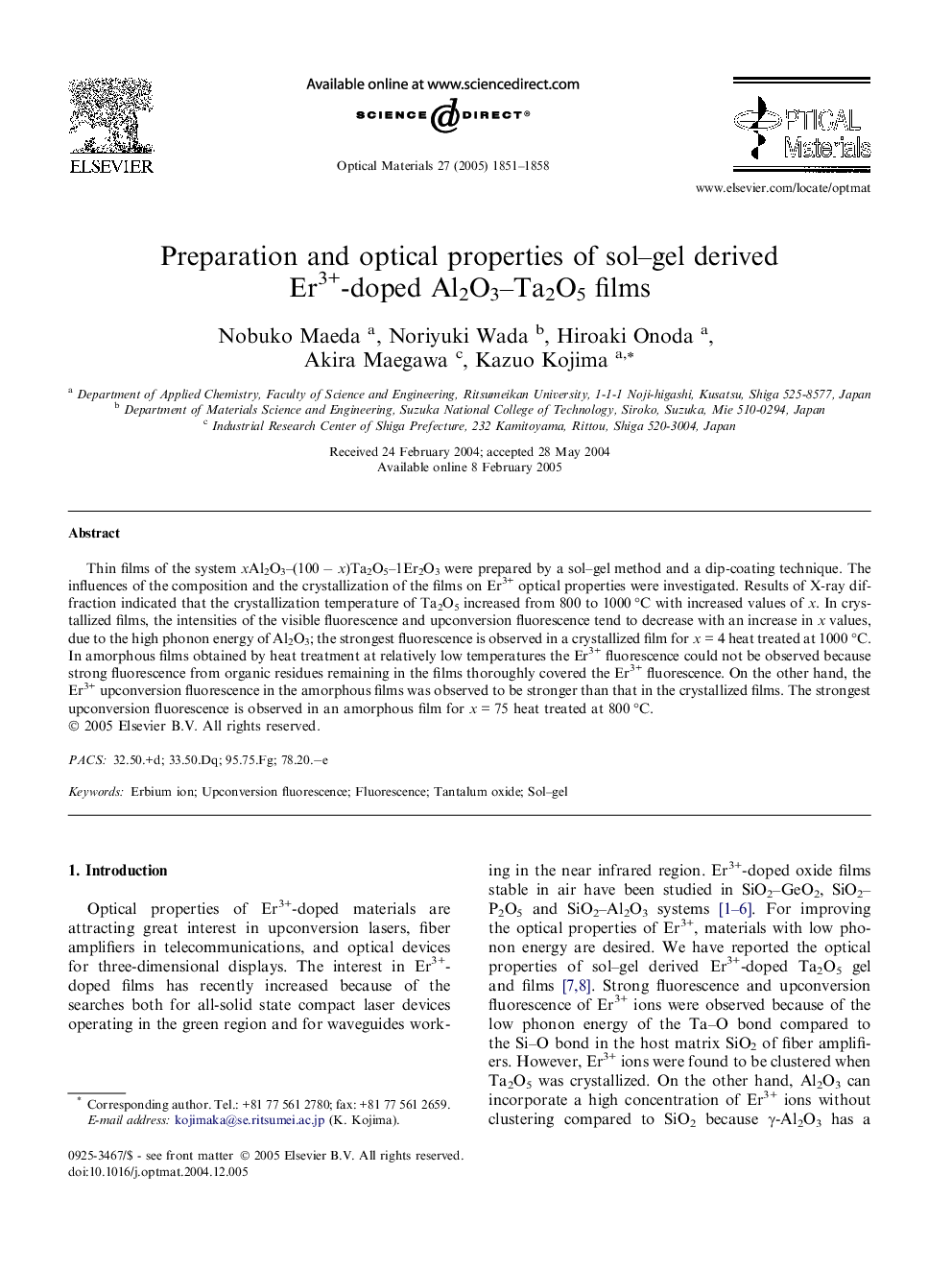| Article ID | Journal | Published Year | Pages | File Type |
|---|---|---|---|---|
| 10633452 | Optical Materials | 2005 | 8 Pages |
Abstract
Thin films of the system xAl2O3-(100 â x)Ta2O5-1Er2O3 were prepared by a sol-gel method and a dip-coating technique. The influences of the composition and the crystallization of the films on Er3+ optical properties were investigated. Results of X-ray diffraction indicated that the crystallization temperature of Ta2O5 increased from 800 to 1000 °C with increased values of x. In crystallized films, the intensities of the visible fluorescence and upconversion fluorescence tend to decrease with an increase in x values, due to the high phonon energy of Al2O3; the strongest fluorescence is observed in a crystallized film for x = 4 heat treated at 1000 °C. In amorphous films obtained by heat treatment at relatively low temperatures the Er3+ fluorescence could not be observed because strong fluorescence from organic residues remaining in the films thoroughly covered the Er3+ fluorescence. On the other hand, the Er3+ upconversion fluorescence in the amorphous films was observed to be stronger than that in the crystallized films. The strongest upconversion fluorescence is observed in an amorphous film for x = 75 heat treated at 800 °C.
Keywords
Related Topics
Physical Sciences and Engineering
Materials Science
Ceramics and Composites
Authors
Nobuko Maeda, Noriyuki Wada, Hiroaki Onoda, Akira Maegawa, Kazuo Kojima,
